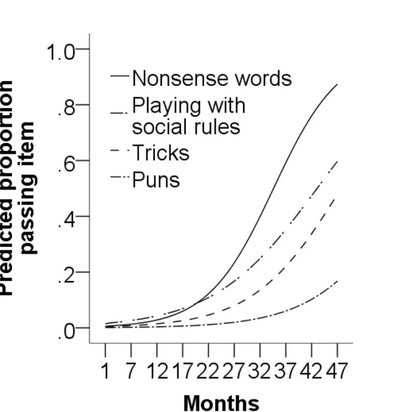 The other strategic aim nomads might fight over is for the acquisition of some kind of movable good, which is to say raiding for stuff. Because all of the warriors (which is generally to say all of the free adult males) of these societies are mounted and because they have a subsistence system which allows rapid, relatively along distance movements (often concealed; remember that Mongols need not light any camp fires), nomads make fearsome raiders, able to strike, grab the things they are looking for and quickly retreat before a counterattack can be mobilized. That goes just as well for raiding each other as it does for raiding the farmers at the edges of the grasslands.
The other strategic aim nomads might fight over is for the acquisition of some kind of movable good, which is to say raiding for stuff. Because all of the warriors (which is generally to say all of the free adult males) of these societies are mounted and because they have a subsistence system which allows rapid, relatively along distance movements (often concealed; remember that Mongols need not light any camp fires), nomads make fearsome raiders, able to strike, grab the things they are looking for and quickly retreat before a counterattack can be mobilized. That goes just as well for raiding each other as it does for raiding the farmers at the edges of the grasslands.
But what are the things here that they are aiming to get? It depends on the targets; nomadic raids into the settled zone generally aim to capture the goods that agrarian societies produce which nomadic societies do not: stocks of cereal crops, metal goods and luxury goods. But most nomadic raiding was directed against other nomads, seeking to acquire either people or animals.
On the Great Plains, the animals in question were invariably horses; the act of stealing, or “cutting out” a horse gives McGinnis part of the title of his book (Counting Coup and Cutting Horses) and raids for horses dominate both McGinnis and Secoy’s discussion of Plains Native American warfare. Horses were, after all, a scarce commodity which only percolated into the Great Plains from the South (and which could only be raised in quantity in its southern reaches), but which all tribes required both to hunt and fight effectively. Stealing enemy horses thus both strengthened your tribe while weakening your enemies, both in military and subsistence terms. The Mongols also engaged in quite a lot of raiding for horses, but also – in a pastoral subsistence system – a lot of simple cattle rustling as well (e.g. Ratchnevsky, op. cit., 28-31).
Raiding for people is more complex, but undeniably part of this system of warfare. But crucially this raiding was generally not for slave-trading (though there are exceptions which I discussed last time), but instead incorporative raiding. What I mean by that is that the intent in gaining captives in the raid was to incorporate those captives, either as full or subordinate members, into the nomadic community doing the raiding. Remember: the big tribe is the safe tribe, so incorporating new members is a good way to improve security in the long run.
On the Eurasian Steppe, incorporated captives became the ötögus bo’ol “bonded serfs” that we mentioned previously (Ratchnevsky, op. cit., 12-4). Unlike warfare on the Great Plains, it seems possible for the bo’ol to include adult men, either captured or sold (by destitute parents) as children or else taken as prisoners when their tribe or clan was essentially dissolved by being conquered in war. Indeed, in his own conquests, Chinggis only decreed the annihilation of one tribe, the Mongols’ traditional enemies, the Tatars – there he ordered the death of any Tatar male taller than the linchpin of an oxcart (May, Mongols, 12). In other cases, it is clear that the incorporation of defeated nomad warriors into the successful tribe was fairly normal, though raids to capture women and children (also for incorporation) were just as common. Bride abduction in particular was very common on the Steppe, as Ratchnevsky notes (op. cit., 34-5).
The incorporation of males was far less common in Great Plains Native American warfare, but the capture of women and children to enhance tribal strength in the long term was a core objective in raiding. McGinnis (op. cit., 42-3) notes how the Crow, after suffering a massive defeat in the early 1820s which resulted in the deaths of many warriors and the capture of perhaps several hundred women and children, steadily built their tribe back up over the following decades with an intentional strategy of capturing women and children from their enemies. As McGinnis (op. cit., 24) notes, women captured in this way might be married into the capturing tribe, adopted into it, or sometimes kept as an enslaved laborer (under quite bad conditions). Adult males, by contrast, were almost always killed; unlike on the Steppe, the incorporation of formerly hostile warriors doesn’t seem to have been considered possible (though one wonders if this would have become cultural practice given enough time; both McGinnis and Secoy note how the increasing lethality of warfare post-gun/horse led to slow population decline overall, which may, had the system run without outside interference long enough, led to the emergence of norms more closely resembling the Eurasian Steppe. We should keep in mind that the Eurasian horse-system had many centuries to sort itself out, whereas the North American horse-system was essentially strangled in its crib).
Of course, taken together with the previous discussion of territorial warfare, we can see that all of these raids have a double purpose: they both aim to acquire resources (horses, sheep, humans) and at the same time inflict damage on an opponent with the long-term goal of forcing that enemy to move further away, opening their pastures or hunting grounds for exploitation by the victorious tribe. Thus in the long-term, each successful raid is intended to build a sense of threat which eventually results in territorial gains (though in cases of real power asymmetry, the long term could come very rapidly; people aren’t stupid and if you are being raided by a clearly superior opponent, you are likely to move on before you lose everything of value).
Squaring the ugly reality of nomadic raiding with [George R.R.] Martin’s depiction [of his nomadic Dothraki] is tricky. On the one hand, a raid in which exceptional victory results in enemy women and children taken captive and fit adult males slain fits within either the Great Plains Native American or Steppe nomad military tradition. On the other hand, the immediate declaration by Drogo’s men that female captives taken this way are not marriageable (AGoT, 559; the idea is treated as laughable) and the killing of all of the very valuable livestock (which, even if the Dothraki are not herdsmen, these animals could be eaten, or quite easily driven to a place where they could be sold or traded for other resources, like metalwork) suggests that Martin has not understood why those raids happened. Instead, it seems like his imagination is only able to view these raids from the perspective of the settled people on the receiving end.
Instead, Martin’s understanding of Native American warfare seems not conditioned by any actual Native Americans, but rather by Hollywood depictions of Native Americans during the Hollywood “Golden Age” which were in turn conditioned by sensational accounts of Western settlers who themselves didn’t understand how Native American warfare worked on the Great Plains. As we will see, the Game of Thrones showrunners took that unfortunate subtext when making the show itself, and turned it into actual text.
Bret Devereaux, “Collections: That Dothraki Horde, Part IV: Screamers and Howlers”, A Collection of Unmitigated Pedantry, 2021-01-08.









